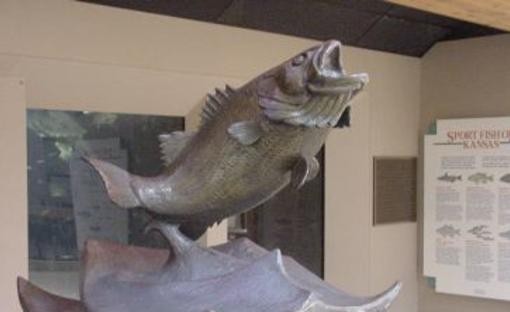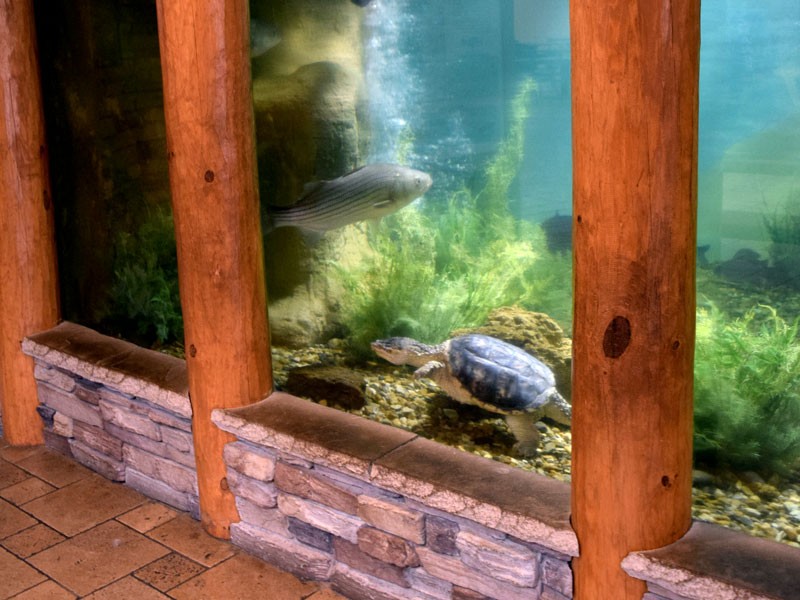The aquarium is home for 50 to 100 native fishes, including channel catfish, bluegill, crappie, wipers (white bass and striped bass hybrids), largemouth and white bass, and walleye. Schools of seasonally available fish will be added to keep the exhibit new and exciting.
There are unique personalities which also dwell in this underwater community. There are feisty, moss-covered snapping turtles and small, brightly colored “paint” turtles who enjoy sunning under the overhead lamps. Other, harder to find fishes, will be added as water conditions and availability allow. Some of these species are the paddlefish (or spoonbill), albino catfish, sturgeon, spotted gar, and grass carp.
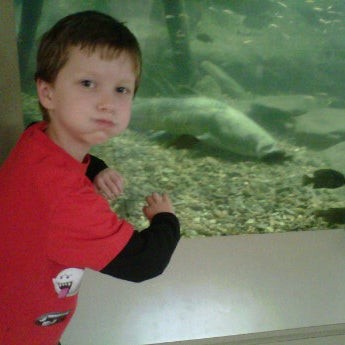
As with any living environment, original species will grow and new fishes will be introduced. Approximately 3,000 fathead minnows are added to the tank weekly to promote the fishes’ inherent foraging habits. Some of these may survive in the dark crevices of the habitat and grow into the active community.
Spawning is somewhat dependent upon warmer, often more shallow, water. Slight changes in temperature and the density of the aquarium may not be conductive to natural reproduction. Therefore, a small percentage of the population will have to be replaced. Each new specimen, many of which come directly from the wild, swims in a chemically-treated holding tank for approximately one hour before being introduced into the aquarium. This treatment prevents the likelihood of a parasitic lifecycle to become established in the environment.
The fish quickly become adjusted to their new home as well as the regular feeding schedule. In addition to the minnows, their diet consists of commercially prepared pellets and natural staples such as bait, bugs, and earthworms — although, an occasional meal of crayfish or frozen smelts is a real treat! The grass carp is an exception to the rule. This species, originating in China, is a strict vegetarian and helps to maintain a clean environment by eating only algae and minute green plants.
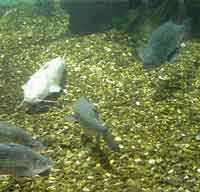
The Kansas Fish Exhibit was designed and built by H. Doug Kemper, Jr. known nationwide for his work on several prominent museum, zoological, and aquatic displays. The aquarium is constructed of a single freestanding fiberglass unit 25 feet long and 12 feet wide with a water depth of six and one half feet. The six acrylic viewing windows are one and one half inches thick and hold back nearly 15,000 gallons of water. Kemper recreated the typical Kansas river habitat by using natural tree roots, branches and rock.
Banners and interpretive graphics were produced by BIOS of Seattle, WA, an exhibit design firm. The graphics describe the various species, food chains in aquatic environments, and the Kansas Department of Wildlife and Parks fisheries management.
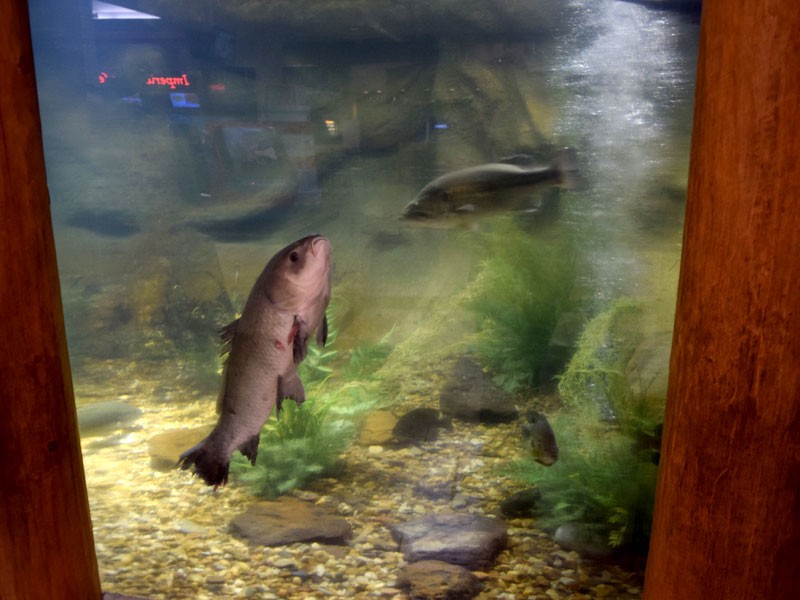
To insure a healthy environment within the aquarium, it is important that there be a proper chemical balance and oxygen supply.
Regular tap water, which locally is salty and hard, is chemically treated and continuously circulated through a sand pressure filter, also designed by BIOS, to remove particulate matter, thereby maintaining a high degree of clarity. A series of perforated pipes below the gravel floor serve as an additional biological filter.
A constant flow of water makes up for loss due to normal evaporation and backwashing (backwashing is a process in which the water flow through the sand pressure filter is reversed for a short period of time to keep it clean).
A surface aerator provides current to the water, thus raising the level of oxygen in the tank while 300-400 watt halogen bulbs illuminate the display during the day. The temperature will remain in the 65-70 degree range with slight seasonal variation.

